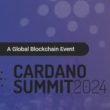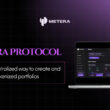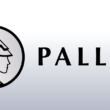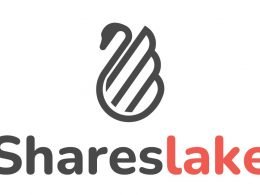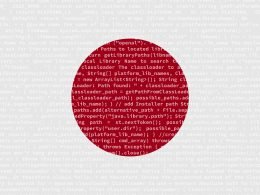The founders of Metera understand that people face problems that urgently need to be solved, such as climate change, poverty and inequality in access to financial infrastructure. Traditional finance will be complemented by decentralized finance (DeFi), which will be essential to support business activities that generate and promote the resilience of ecosystems.
We live in a centralized world ruled by few. The team seeks to change this market by giving people the right to make the most of their own money with investments in sustainable projects and with solutions for people.
The team has focused on services focused on financial solutions, which can transform society’s possibilities for an environmentally sustainable future.
Thus, Metera will be a Cardano-based platform, consisting of vetted, high-quality portfolios focused on sustainability projects.
How Does Metera Work?
Metera will be a protocol to track and create Portfolios of assets focused on integrated sustainability parameters, and with a DAO for decentralized governance. This will allow better risk management and lower costs, since holders will not need to actively manage them.
Exposure to these Portfolios will be represented through Enigma Token (ETK). Participating users will receive ETKs, and their participation will be prorated in relation to the size of the purchase, and ETKs can be freely redeemed at any time.
Metera will use an oracle system to properly screen and qualify the green tokens included as investments in the Portfolios, to help users avoid “greenwashing” where companies fake sustainability goals with the hidden interest of promoting their brand.
Metera will be based on a modular architecture, with multi-asset vaults, multiple sources for pricing and impact metrics, smart contract-mediated rebalancing, integrated portfolio management processes and sound governance structure.
Through its dashboard, users will be able to:
- Measure and visualize impact
- Acquire ETKs
- Manage investments
- Consult impact ratings on a wide variety of assets
The smart contract will involve the vaults that hold its constituent digital assets and the Oracles, which will provide price and impact rankings for Portfolio assets relevant to their management, as well as other metadata such as trust coefficients and fee settings.
Users will be able to vote to rebalance the vaults.
Smart contracts will integrate their action on:
- Multi-Asset Vaults – Will hold multiple tokens that represent underlying assets on and off-chain.
- Portfolio: You will have the ability to improve/modify the parameter weighting formula via oracles.
- Fee Oracle: it will be possible to add/edit/modify the oracles that calculate fees.
- Trust Oracle: Will be able to add/edit/remove oracles and adapters with multiple pricing sources and impact metrics.
- Price Oracle: it will be possible to add/edit/modify the price oracles.
- third party audits
- User registration to have access to all approved instruments.
- Portfolio Management to add/remove tokens, or rebalance a Portfolio’s basket of assets
Metera needs to track assets to make up Portfolios, both on-chain and off-chain. On-chain assets are themselves represented on the blockchain, while off-chain assets must have their corresponding tokenization on the blockchain.
To do this an oracle, which is an information bridge between the on-chain and off-chain worlds, will provide information about the off-chain situation to on-chain smart contracts.
The main data streams will be price, rating, and confidence information.
The Trust Oracle provides the confidence ratios of the information sources involved in a Portfolio’s weighting formula, which is used to calculate the change in assets required to rebalance it.
The Fee Oracle provides information for each transaction about the fees to be paid, and to which addresses.
Management fees are paid each time a Portfolio is rebalanced, with auction exits, trading fees or entry/exit fees.
Fees can ultimately be distributed to users through direct distribution, dividends, and buy-and-burn, where governance will play a role in decision-making.
Tokenomics
The protocol has two tokens, let’s see.
Enigma Token (ETK) that will identify the holders as registered users of Metera, which will give them the right to propose new Portfolios and interact with existing ones.
The ETK minting policy will be governed by the Enigma User Token Minting Policy (MPETK). Anyone can mint an Enigma as long as they meet the requirements set out in monetary policy. Whenever a user wants to stop using the protocol and opt out, the ETK token must be burned.
The Enigma Governance Token (EGTK) will serve as a token to participate in decentralized governance. Using these tokens, a user will be able to vote to decide on the future of the DApp, approve specific governance proposals, grant auditing rights to Auditors, etc.
EGTK will also offer users the ability to claim rewards from the Enigma Vault. Minting and burning will be controlled by the Enigma Governance Token Minting Policy (MPEGTK).
Distribution of the Tokens
It is shown belowA preliminary breakdown of the Token distribution, which as noted in the LightPaper, is subject to change:
- 39% Ecosystem Growth over 18 months
- 10% Stock listing, MM and Marketing
- 5% Project Development: 1% immediately and 4% accrued in 3 years
- 22% Team
- 5% Treasury
- 2% Foundation
- 8% private sale
- 6% advance sale
- 3% public sale
Governance
Governance token holders will be able to collect rewards from the Enigma Vault, will be able to vote on the future of the DApp and its performance rewards, approve specific governance proposals, grant audit rights by voting on the list of Auditors, among others government powers.
Auditors may audit and approve a proposed policy, will work whenever Metera’s smart contracts are substantially updated, or when a new Portfolio is proposed, or to verify the economic/financial soundness of the design, or to periodically check that digital assets are properly backed by real-world underlyings. Auditors may be Holders or Users, depending on their possession of Governance or User Tokens.
The decentralized governance will be structured in a DAO (Decentralized Autonomous Organization), and its EGTK government token will serve as a means of participation.
The Treasury has the main purpose of buying up real estate tokens where prices are being manipulated below the book value of the underlying asset. The reserve is also used to cover any unforeseen costs or opportunities that can grow the community or otherwise help the ecosystem. It sustains itself by receiving a constant flow of assets from the project’s fees.
There will be a Foundation that will work to drive adoption and partnerships and grow the community of the Metera protocol. It will be sustained by receiving a constant flow of assets from project fees.
The Roadmap
2022 Q2:
-MVP development begins
- Smart contracts
- Tests of the main characteristics of the protocol
-Development of methodologies
- ESG Methodology
- Financial Methodology
- Data Engineering Methodology
2022Q3
-Protocol Decentralization
- Implementation of the DAO
- Integration to the Cardano Transaction Library
- Implementation of the Auditors of Portfolios
- Portfolio Registration
- Implementation and optimization on the Cardano Mainnet
2022Q4
-Audit of the protocol and portfolio methodology Launch of the protocol
- Private sale of tokens
- ICO
2023 Q1
-Regular operation
- Launch of new portfolios
2023 Q2
- Start of the development of the new protocol
Writer’s note: The team informed me that the roadmap is out of date as of the publication date of this article. You can consult its update here.
The Team
Metera is a project born in Mexico, developed by Enigma Crypto Capital.
Their members are:
- Daniel Sampson: co-founder. Education: Tecnológico de Monterrey, Bachelor of Finance (2018 – 2020).
- Santiago Portela: co-founder. Education: Universidad Iberoamericana, Bachelor’s degree, Industrial and Product Design (2016 – 2020); Iberoamerican University, General Finance (2015 – 2018).
- Andrea Cass Olmedo: CDO. Education: Ibero-American University, Graphic Design.
- Ernesto Sampson: COO. Education: Tecnológico de Monterrey, Bachelor of Business Strategy and Administration BBA (2017 – 2022).
- Andres Fernandez: CTO. Education: Eindhoven University of Technology, Master of Science (MSc), Operations Management and Logistics (2016 – 2018). Tecnológico de Monterrey, Bachelor in Science, Industrial Engineering with minor in Systems (2012 – 2017).
The team works on the project associated with MLabs.
Web site: https://metera.io/


